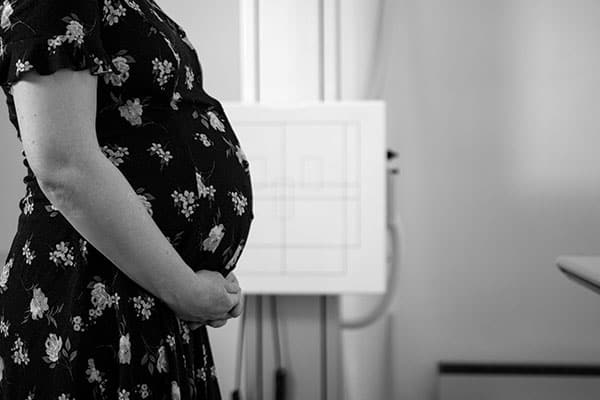Health insurance is a topic that makes my blood boil every time I think about it, in a developed country like America. By throwing the responsibility on private companies and states, America ensures a fragmented system that looks like contraptions my toddler tapes up with scotch tape and band aids.
Before I became a digital nomad expat and self employed, I was blissfully unaware. I chose the path I was supposed to: I graduated from a large school and got a job at a massive company with good benefits. Health insurance enrollment meant ticking a box, and it was fairly painless and I didn't worry about coverage. I thought this was the norm.
The whole point of insurance is to spread risk out among a larger pool of people. Large companies create large group plans largely because underwriters, the insurers ultimately responsible for payouts, can take enough premium (the upfront costs paid for insurance). That upfront premium is invested , includes profits to keep the lights on, and pays out insurance claims.
I don't pretend to fully understand why the system can't work by pooling smaller companies together more efficiently, but most importantly, it just doesn't work. Insurance costs are soaring for everybody and small businesses and entrepreneurs are squeezed out.
Despite the predominance of small businesses in America, the system just does not work for small employers or solopreneurs. In expecting the private sector and individual states to take up the burden, the US has actively encouraged a fragmented system with endless frustrations.
It's no secret that certain top politicians want the current healthcare system to fail, which doesn't help anybody. If it does fail completely, my backup plan is to move my family out of the country, which is a sad state of affairs.

Working Health Systems
Having traveled to nearly 60 countries, it's pretty obvious that working healthcare systems are the simplest and go back to the basics. In most of these countries, developed or emerging, you are eligible for government subsidized healthcare either as a citizen, permanent resident, or as a foreigner legally working in that country.
For example, when I got a work visa in Hong Kong, I was legally eligible to live there, which opened up the healthcare system for me. I could walk into any public hospital or doctor's office with my residency card and receive high quality and affordable care.
There was no looking up doctor directories to see who was covered, at what percentage, or finding out after the fact that I'd accidentally chosen the wrong doctor. If I went to a public institution, it was simple, and surprisingly affordable.

Take one of the most fundamental requirements of continuing human life, the birth of a child. A full term labor and delivery in a HK hospital, epidural included, runs 300 HKD ($40 USD), with no additional insurance payments. Without insurance in the US that bill runs into the tens of thousands, and even with insurance you're looking at a few thousand dollars out of pocket.
And no, you're not delivering a baby in the woods. These are fully trained, high quality doctors at state of the art facilities. They might not be as touchy feely and hold your hand, but they are run as medical institutions and not businesses.
Also there is full mobility within that country. Even if you move between cities, you don't lose health coverage and have to jump through hoops (like in the US). As a traveler healthcare also does not cost an arm and a leg, so even without government subsidies, healthcare should not ever cause bankruptcy abroad, for an American traveling there.
The basic characteristics of a good system:
- Mobility
- Affordability
- Access to high quality care regardless of your situation
US Healthcare System Introduction
Even having lived and worked in the US, every time I come back I have to familiarize myself again with the terms. It's enough to make anyone's head spin. Healthcare plans are different depending on whether you have employer coverage, self purchased marketplace coverage, or federally subsidized medical coverage through plans like Medicaid(for low income) or Medicare (for the elderly).
You can't just walk into any doctor's office or hospital and be covered. Essentially you need to be choosy about where you have an emergency, if it comes down to that. Maybe Americans have become numb to it, but it's literally all we have.
Deductible
Copays
CoInsurance
Out of Pocket Maximum
In Network vs Out of Network
HMO vs PPO
For entrepreneurs who have to buy their own plans, there's open enrollment for health insurance once per year, usually towards the end of the calendar year. Of course there are exceptions that can be made for QLEs, or qualifying life events. A permanent move, change in marital status, birth of a child, all give you an opportunity to apply again, but you need to provide proof.

Tips For Getting Health Insurance When Returning To The US
For a US citizen like me, I expected getting health insurance, even by myself as a solopreneur, to be relatively easier. Having returned to the US a few times, I can personally attest that it's gotten harder.
Know where you will live. Insurance plans and their availability in the US is technically determined by county. For the purposes of applying, at least knowing the state you need primary coverage in allows you to make choices on that state's insurance marketplace. This may not be an issue for those outside of the digital nomad community, but there's not much room for a decision making period if you want immediate healthcare coverage.
If you don't know which state you'd like to live yet, you may have to start the application process in your prospective destinations first. The insurance premium payment is typically not due until you're approved, and you won't be approved if you can't supply the necessary documentation.
When we were deciding between living in Minnesota and California, I had to do this because I had a high risk pregnancy and required immediate coverage. The application process can take a few weeks for the insurance company to either ask you for additional proof or approve coverage. Applications are automatically canceled anyway without supplementary proof.
Apply the month before moving. Application deadlines are generally before the 15th if you'd like to be covered the following month. So if you're arriving in June, make sure you apply before May 15th. You won't have all the documentation verifying your move yet, but that can be submitted later.
Healthcare.gov, Ehealthinsurance, or your state online marketplace (like Covered California) are good starting points. Insurance agents should be able to help you navigate the process, without an additional charge. I used ehealthinsurance and was thankful to have an agent follow up for me.
An exception is if you qualify for Medicaid or a government sponsored medical program for pregnant women. That coverage in many states can be done retroactively from the date of your actual move.
Residency proof. Each state will have list of qualifying documents that can prove residency, but they typically include a state ID, lease, utility bill, or auto registration/insurance.
Complete the process within 60 days. Your qualifying life event must have been within the last 60 days. After that it's not possible to reapply for medical coverage for the year.

Moving proof. One of the requirements for a permanent move qualification was having an entry stamp from immigration. The problem is, immigration no longer stamps passports on entry. I was told to call Customs and Border patrol (no answer) or Homeland Security for an entry/exit report.
Thankfully I'd also kept my boarding passes and sent those through along with my flight receipt to show that I had moved from abroad. I also was asked to send in my lease agreement from overseas to show I had been living there. The additional questioning and back and forth added 2-3 weeks of uncertainty on the application process.
Cost Variables
Health care plans need to be chosen based on
- Expected frequency of doctor visits
- Choice of doctors
- Maximum out of pocket
- Monthly premium
One of the dilemmas that makes me bristle is having to guess yearly actual medical expenses. A true safety net shouldn't have its participants playing a game of chance with their lives. A safety net is there when you least expect it and most need it.
The counter point is that well, if you don't use the medical system, maybe it saves a bit of money to pay according to use. With copays and coinsurance, you're already doing that anyway. And again, where is compassion and the desire to maintain a safety net that works for everyone? It barely works for ourselves – we pay dearly for it.

In general the math means that the more you want your insurance to kick in (with a lower deductible, out of pocket maximum, copay, or coinsurance), the more insurance premium you can expect to pay. For a planned medical event like pregnancy, paying higher premium upfront and choosing a Gold or Platinum plan minimizes overall payments for medical care throughout the year.
Knowing that I needed to use my health insurance plan for a high risk pregnancy, labor, and delivery, I chose a Platinum PPO plan that would also allow me greater choice of doctors. In Riverside county my health insurance was $680. But for the exact same plan in Orange county it went up to $718 a month. For one pregnant adult. That's an extra $456/year based on county. For my healthy husband and daughter it also went up $240 for the year.
This doesn't even cover dental expenses or dental related emergencies.
Dentistry
Around 115 million Americans don't have dental insurance. If you get hit in the jaw your medical insurance will not cover anything required for your teeth.
I'd also been completely unaware how much of a variation there was in dentists, until I went to a spate of dentists around California, around the same time, one of whom pronounced me with 5 cavities and the others who counted 2 or even none.

While abroad I also learned that only in the US do they specifically try to x-ray each tooth to look for cavities, which can lead to more procedures. It is a business after all.
Dental insurance is a bit more affordable. My process has been to looking for an honest dentist through referrals, and then finding out what insurance they take. Trying to find a health insurance plan for the dentist recommendations you have is easier if you are willing to pay for a higher priced PPO plan.
I've generally found that highly rated dentists are not in network for HMO plans, which probably pay them less. Go figure.
Finding medical and dental insurance can be a painful process if you're self employed. Good luck and ask if you have questions!


Pingback: Family Living Costs In 5 Major Cities Around The World - FamilyFI Life
Pingback: International And Domestic Geo Arbitrage: Critical Decision Points - FamilyFI Life